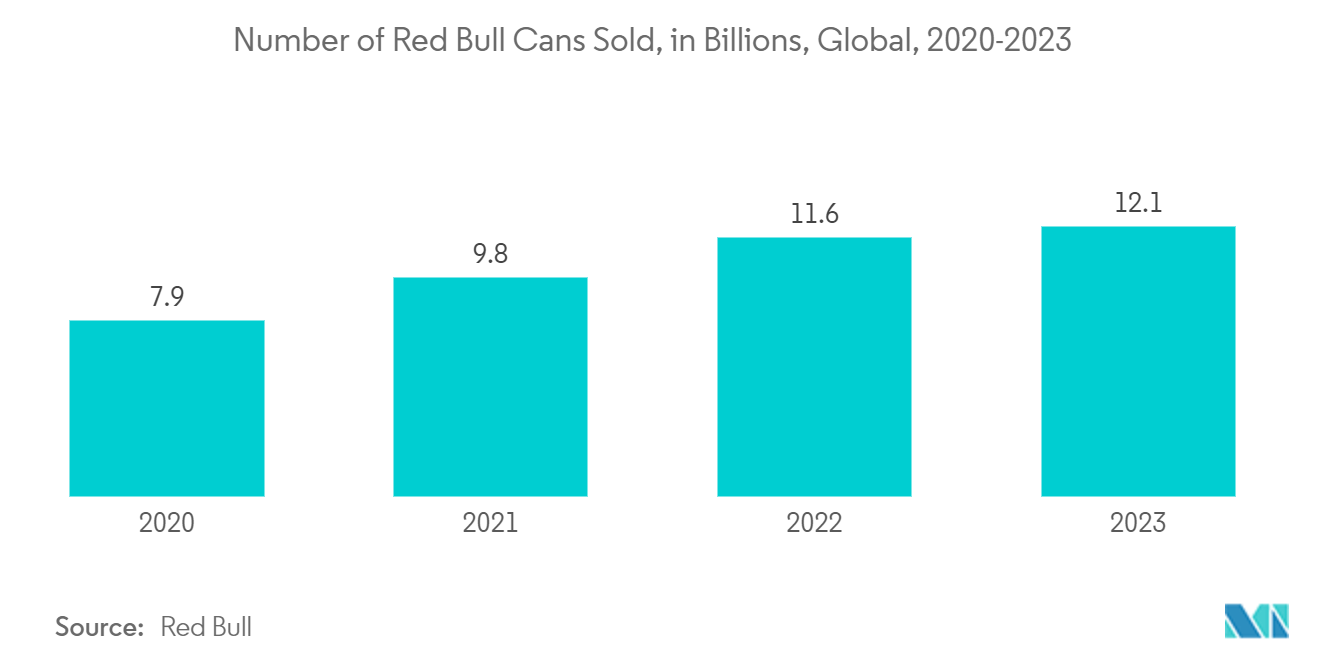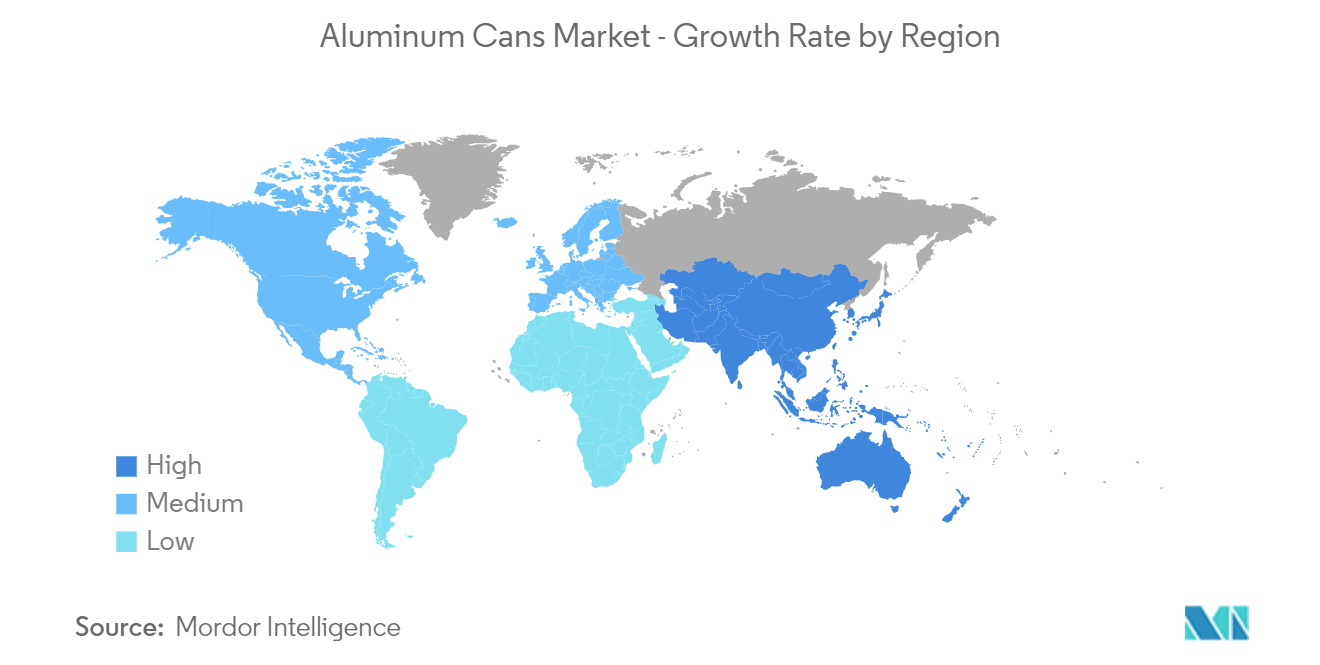Market Trends of Aluminum Cans Industry
The Beverages Segment is Expected to Drive the Market
- The younger population and people who live alone are consuming more canned beverages. These users have less time and are budget-restrained, opting for products with premium costs and higher convenience. Changing lifestyles in developing countries worldwide and the growing rate of urbanization are resulting in consumers opting for canned beverages. Additionally, with the shrinking size of the family and changing lifestyle patterns, the declining amount of time spent on cooking at home, and the collaboration of beverage companies with food chains are supporting the demand for can packaging worldwide.
- Aluminum cans are most widely used for beverages, with the most notable trend of canned wine, cocktails, hard beverages, and soft beverages being packaged in metal, driven by the need for portability in the market. The usage of metal cans in the beverage industry can be widely classified into alcoholic and non-alcoholic drinks based on the nature of the beverage. Alcoholic drinks, such as beer, have historically used metal cans, while other kinds of liquor, like wine, traditionally served in glass bottles, are increasingly adopting metal cans.
- Cans have surged in popularity with millennials and Gen Z due to their portability and user-friendly nature. Moreover, manufacturers are increasingly opting for can packaging, given its appeal to the younger demographic. For instance, in January 2024, Redbull reported that the company sold 12.1 billion cans worldwide in 2023, a significant increase from the previous years, underscoring the future demand and increasing trend of can usage in the beverage segment.
- Beverage companies worldwide are broadening their portfolio by offering canned beverages to showcase their premium products, supporting segmental growth. For instance, in April 2024, Coca-Cola’s Smartwater launched sleekly designed aluminum cans and announced that Smartwater Original and Smartwater Alkaline with antioxidants would be available across the United States in single 12-oz. cans.
- Aluminum is highly corrosion resistant, effectively shielding beverages from sunlight and oxygen, minimizing the risk of contamination. This renders aluminum cans ideal for packaging acidic or carbonated drinks, including beer, wine, and soda, without compromising their initial quality. Furthermore, aluminum's superior cold-conducting properties ensure that beverages chill rapidly and remain colder for extended periods compared to alternative packaging materials, supporting the demand for canned drinks in the market.

North America is Expected to Hold a Significant Market Share
- North America accounts for the largest revenue share due to growing concerns regarding using and consuming sustainable packaging materials. There has been steady growth in products such as sodas, energy drinks, sparkling waters, and, increasingly, craft brew beers. Aluminum cans are among the most sustainable beverage packages and are infinitely recyclable. They also chill quickly, provide a superior metal canvas to print, and offer protection for the flavor and integrity of beverages.
- In February 2024, Every Can Counts, a program advocating for drink can recycling, announced its expansion into the United States. Every Can Counts US would be a collaborative effort between key players in the market, including Ardagh Metal Packaging, CANPACK, Crown Holdings, and Envases, representing the manufacturers, and Constellium, Kaiser Aluminum, Novelis, and Tri-Arrows Aluminum, the aluminum suppliers. These partners would promote responsible disposal of empty drink cans through recycling, bolstering the adoption and recyclability of aluminum cans.
- The demand for aerosol cans is anticipated to rise with the personal care industry’s expansion in the United States. The growth of the personal care industry is primarily related to consumers' increased disposable income and ability to purchase luxury goods. Aerosols are utilized in several personal care products. Thus, the market is projected to profit from their increased sales.
- Higher demand for deodorants and antiperspirants led to the installation of an increasing number of production lines in North America over the past few years. North America accounts for a significant share of the aluminum cans market due to the growing demand from the personal care industry, which spans products of various types, such as deodorants, antiperspirants, hair mousses, hair sprays, and shaving mousses.
- The government of Canada assisted its businesses. The government claimed that it was vital to foster a strong and lasting economic recovery by investing in innovation, which could allow the country to achieve its potential for low-carbon growth. The government is expected to invest heavily in helping Canada's aluminum cans market eliminate greenhouse gas emissions. According to the government, zero-carbon aluminum smelting would help meet Canada's economic and climate change objectives.


